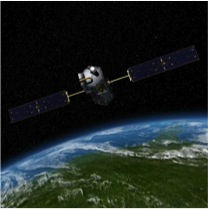Research
The research in my group is driven primarily by a desire to increase our knowledge of anthropogenically-forced global climate change. In order to be able to accurately predict future climate for a given scenario of human emissions, it is important to understand currently-occurring changes in the earth system. In my group this is done primarily through global-scale satellite measurements of climatically important variables, such as longwave radiation, clouds, and greenhouse gases (GHGs) such as carbon dioxide. One of our main projects is to better understand the earth's carbon cycle through precision measurements of carbon dioxide and methane, the two most important greenhouse gases. Precision measurements of these gases may one day lead to the ability to do "top-down" accounting of GHG emissions, which could help in verifying such emissions in a treaty-relevant manner.
Current Research Projects
- Participation in the Carbon Monitoring System (CMS) flux project which aims to monitor and understand changes in terrestial, oceanic, and anthropogenic fluxes of carbon to and from the atmosphere. Understanding these fluxes is critical to understanding how the earth is responding to the constantly increasing burden of carbon dioxide in the atmosphere, via natural mechanisms that both remove some of that carbon ("sinks"), as well as add carbon to the atmosphere "sources". Our participation is to provide guidance and sometimes simulations on satellite measurements of carbon dioxide, as it is believed these measurements can provide critical constraints on currently-occuring natural sources and sinks of CO2.
- Improving our longterm record of the amount of water locked up in liquid clouds, the so-called "cloud liquid water path". LWP is an alternative to the better-known cloud-fraction, but has its advantages because it is more physical (being directly related to the mass of the cloud), and is relatively straightforward to measure with satellite-based passive microwave sensors, available since about 1988. This project will help improve and extend a long-term LWP climatology.
Research Sponsors
